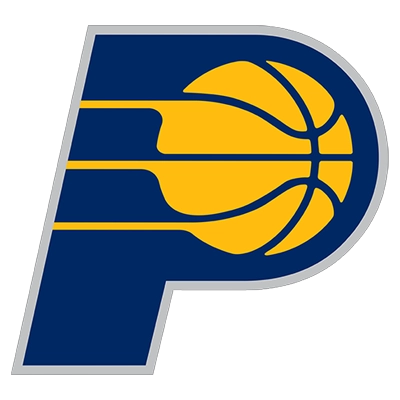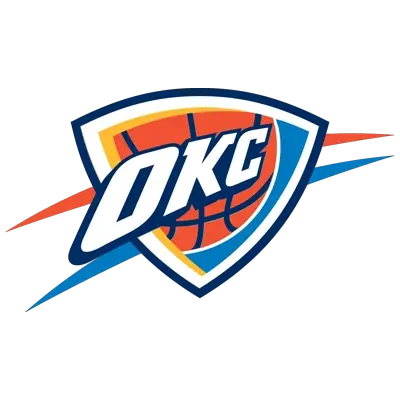Are Sportsbooks Targeting Addicts? A Look at Marketing Tactics
Sportsbooks are having a field day. Betting is booming, and it’s everywhere you look—even if you aren’t looking for it.
Turn on the TV? Commercials from BetMGM. Watch TikTok? Promoted ads from DraftKings. Instagram and Facebook? FanDuel. You get the general idea. If you have zero interest in sports betting, you are still exposed to tons of marketing from these entities.
There are everyday ads, special game day ads, and targeted push alerts for users. The platforms are dueling it out in the media in a fierce competition for your attention and your money. And as the industry gets more sophisticated? The marketing tactics follow suit. Which poses a tough but legit question: Do some of these ads target the most vulnerable players? The ones who are having a hard time stopping?
That’s what we want to know! Keep reading to discover what we found out about how sportsbooks use data, design, and psychology to keep people betting, and if that the line between marketing and manipulation is bordering on nonexistent.
The Rise of Personalized Sports Betting Ads
The marketing machine has gone from mass promotion to one-on-one persuasion. Ads used to be limited to TV and stadium banners, but sportsbook ads got a digital glow-up, and they’re following users from social media platforms to inboxes. How do sportsbooks use our data, habits, and behavioral triggers to time their ads perfectly, and, in some cases, problematically? Let’s get into it!
From TV Spots to TikTok — How Sportsbooks Found You
Ten years ago, sportsbook marketing meant just TV ads and stadium sponsorships. Today? It’s hyper-personalized and follows you everywhere you go. In the early days of legal U.S. sports betting (post-2018), companies like DraftKings and FanDuel blanketed the airwaves and plastered their logos in sports arenas. Sports broadcasts began to feature odds updates, and podcasts got peppered with betting ads. But traditional ads were just the beginning.
Modern sportsbooks have shifted gears to digital and data-driven tactics. They track your clicks and bets in granular detail and then tailor promos to your behavior. Social media and mobile apps are the new frontier; sports betting companies have partnered with influencers and used platforms like TikTok to reach new audiences, and a major bookmaker ran TikTok ads targeting young women to broaden its mostly male user base.

Push notifications on your phone prod you with “special offers” at the right (or wrong) moments. A dormant customer could get a text for a “limited-time” free bet bundle, and that’s dangerous if you’ve been trying to cut down or stop. And if you do stop, you’re likely to get a “we miss you” reactivation bonus, as the companies openly talk about “win-back” campaigns to lure back lapsed users.
How Do They Know?
Behavioral tracking and AI have enabled platforms to analyze everything. Like your favorite teams, how much you wager, when you bet, and which bets you almost won. If you always bet on the Warriors, don’t be shocked when your app serves up a boosted odds promo on the next Warriors game.
A betting tech CEO explained how their AI engine personalizes offers based on each user’s habits, suggesting “Because you bet on this, you might also like this” bets to keep users playing. 72% of sportsbook operators surveyed said a “personalized player experience” is the biggest factor in keeping customers betting.
The targeted tactics represent a huge evolution from the one-size billboard ad. Sportsbook marketing has become a 24/7, personalized dialogue, trailing you from TV to X to the phone you’re holding. The convenience is undeniable, but so is the concern that this kind of precision is being used to exploit our weaknesses.
Behavioral Psychology Behind the Promotions
You’ve no doubt seen a “risk-free bet” or a bonus pop up at just the right time, and it’s no coincidence. Read on to find out how sportsbooks use psychology, aka dopamine triggers, loss-chasing incentives, and near-miss rewards, to make betting addictive by design.
Free Bets Aren’t Really Free
Just like a physical casino, it’s not an accident that sportsbooks and gambling sites are addictive. The platforms are all engineered with the same psychology that casinos have used forever; only now it’s been supercharged for mobile. What are some of the powerful hooks that are built into betting promos and apps? The following:
Making a bet (and hoping for a win) triggers a surge of dopamine, which is our brain’s pleasure chemical. Sportsbook apps capitalize on this by offering users constant mini-rewards. Every animation for a win, or a near-win, delivers a quick neurological “high” that keeps you returning. The apps are built to make every second of a game feel high-stakes, “Delivering a hit of dopamine each time you bet, win, or almost win,” as one psychologist said.
The opposite of the highs are the lows, and betting promos are ready to catch you when you hit the floor. Sportsbooks frequently dangle “second chance” or “no-sweat” bets that refund your stake (as site credit) after a loss, conditioning you to keep betting. This feeds into the classic gambling fallacy of chasing losses. Your tolerance builds, and the small bets don’t feel like they used to, so bettors will up the ante or try parlays to recapture that rush. It’s a dangerous reinforcement cycle: the more you play (even if you’re losing), the more the app nudges you to play again.
In gambling psychology, “near misses” (almost winning) can be as motivating as the wins. Sports betting is full of near misses, like losing a parlay by one leg or a last-second bad beat on a point spread. Bettors who lose by a smidge usually feel encouraged rather than discouraged, which sportsbooks implicitly exploit. Promotions like parlay insurance (“money back if you lose one leg”) highlight your near-miss, and that tempts you to try again. The apps know that almost hitting a big win will light up your brain’s reward pathways and spur more bets.
Sportsbooks also use the fear of missing out to prompt impulsive bets. Limited-time odds boosts, one-day bonus tokens, and countdown timers on promotions create a false sense of urgency. A push notification will announce “Today only: Bet $50, get $50 free!,” and that will push you to feel like you have to act now or regret it later. The tactics leverage our aversion to missing a deal. Experts say that push alerts stressing urgency and scarcity are a big red flag, especially if they’re sent to someone who is trying to stay away. The offer of “10 free bets” expiring at midnight can be the siren song that pulls a vulnerable user right back in.
In addition to the promos, the app UX is deliberately built to keep you hooked. Depositing and betting are one-click easy, and self-exclusion or setting limits are sometimes buried in the menus. Bright colors and casino-style sounds celebrate wins, and your losses are less visibly tracked—there is no running total of the money you’ve lost. The apps also bombard you with continuous prompts; as soon as you place one bet, a pop-up suggests another.
And sportsbook accounts are notorious for being hard to close—you have to jump through a ton of hoops and call the platform to confirm. All of the above dark design patterns make it questionable if it’s a fun experience or a manipulative one, as they make sure that users stay longer, bet more, and have a harder time walking away.
Who’s Most at Risk?
Then there are the bettors who get the “VIP” treatment, but that’s not always a good thing. Customers are treated differently based on how much they spend, and sportsbooks use that to zero in on them with the most aggressive marketing tactics.
Data-Driven or Dangerously Predatory?
The biggest spenders (aka whales) and most frequent gamblers, who are those who are in the highest risk category, always get the most aggressive attention. The high-value customers are courted with VIP perks, personal managers, and constant offers.
A recent UK court case revealed just how predatory this can get. A recovering gambling addict testified that a betting company bombarded him with over 1,300 promotional emails in two years. He had never meaningfully consented to this kind of marketing and was spending all of his wages on bets, which is an obvious sign of problem gambling.
Instead of flagging him as high-risk, the company labeled him a “high-value” VIP. Internal documents showed that when he did finally stop gambling, they immediately started to strategize how to “win back” what they saw as a “lucrative customer.” The judge in the case condemned the firm’s use of personal data and ruled the targeting was unlawful and “parasitic” given the man’s impaired ability to consent due to addiction. This is a stark example of data-driven marketing overriding basic ethics.

And it’s by no means an isolated incident. Watchdogs have long noted that VIP and loyalty programs ensnare problem gamblers. A leaked industry report in Britain found that a tiny fraction of customers (usually VIPs) generated a huge share of deposits—at one betting firm, only 2% of users accounted for 83% of all deposits. The VIPs were disproportionately likely to be addicts or on the verge. The companies lured them in with free bets, cashback on losses, and event tickets, which were basically rewards for being a big loser.
It’s not surprising that U.K. regulators cited VIP schemes as a factor in 7 out of 10 regulatory penalties for failing to protect problem gamblers. The UK Gambling Commission eventually stepped in with strict new rules to curb “irresponsible VIP practices,” warning that companies have to do thorough checks before showering perks on someone who might be gambling beyond their means.
In the U.S., regulation hasn’t yet caught up to such tactics, and some operators are really pushing the envelope. Internal job postings have hinted at priorities that put profit over player safety.
FanDuel, owned by Flutter Entertainment, advertised VIP account manager roles that were expected to “increase player activity and drive revenue.” Their job description is to get the top customers to bet more, which is way different than Flutter’s practice in the U.K., where VIP managers aren’t incentivized by customer spending, specifically to avoid problematic exploitation. FYI: FanDuel removed that specific phrasing after it drew scrutiny in 2024.
And although British online casinos have limits like a £10 cap per slot spin to slow down high rollers, the same company’s U.S. platforms allow far higher bets in the absence of such rules. All of this suggests that, in newer markets like the U.S., data-driven targeting of big spenders slides into dangerously predatory territory before regulators can pump the brakes.
Who else is at risk? Marketing algorithms also single out people who exhibit “chase” behavior or other red-flag patterns. Those who regularly deposit after losses or play at 3 am will get tagged for special offers, when in reality they’re showing signs of distress. Insiders and experts worry that with advanced AI, sportsbooks could identify and exploit susceptible gamblers with chilling precision.
Dr. Timothy Fong of UCLA’s Gambling Studies Program said, “AI can create predatory scenarios, where people who are already vulnerable because of mental health issues or a gambling addiction could be manipulated or targeted without their knowledge.” In other words, the same data tools that could be used to intervene and help are being used to maximize revenue from those who are least able to resist.
Ultimately, problem gamblers and those who are teetering on the edge are at the highest risk of being targeted by intense marketing. They bet more, so they’re valued more, which is a bleak reality.
An addiction advocate asked, “What percentage of gambling profits come from those with a disorder?” The answer? Several analyses suggest that it’s alarmingly high, anywhere from 15% on the low end to possibly one-third or more of revenues coming from people with gambling problems. This creates a perverse incentive: the house needs its most addicted players to keep playing. And that makes the line between “VIP treatment” and predation very, very thin.
Loopholes in Self-Exclusion and Compliance
If you’re trying to slow down or quit? Welp, the ads might not let you. Self-exclusion is supposed to give gamblers a way out, but there are big holes in the system that allow marketing messages to get through. Sportsbooks (and affiliates) still reach self-banned users, and the fragmented oversight just isn’t cutting it.
When Self-Bans Fail and Ads Keep Coming
There are people who know that they have a gambling problem, and self-exclusion programs are supposed to be a lifeline, and in theory, they are! . You can ban yourself from betting sites and casinos, and the companies have to stop taking your bets and stop marketing to you.
Unfortunately, this is full of loopholes, and addicted gamblers are pushed by the marketing that they tried to escape.
A glaring example happened in the UK during what was ironically the “Safer Gambling Week.” Flutter’s Sky Bet brand mistakenly sent out a blast email with a bonus offer (“Take a peek at what your mystery bonus is… opt in, spend £5 and claim your 100 free spins”) to thousands of people, including recovering addicts who had self-excluded from all gambling.
The people had taken the proactive step to ban themselves via the GamStop program, yet here they were, getting a tempting promo right in their inbox. The fallout was quick: regulators launched a probe, Sky Bet apologized, and campaigners were outraged.
A self-excluded man said, “They shouldn’t be targeting anyone, let alone people who’ve told them they have a problem… I tried to access my account [after that email].” And a former party leader in Parliament lambasted it as “Outrageous…self-regulation doesn’t work…People trying to stop are being targeted, like throwing a free shot of tequila at an alcoholic.”
That incident exposed a loophole: Human or system error can accidentally (or carelessly) keep problem gamblers on marketing lists. Regulators in jurisdictions explicitly ban contacting self-excluded patrons, as it’s a basic responsible gambling requirement, but we keep seeing failures.
In the U.S., Caesars Entertainment was fined for sending promo emails to 231 people on the self-exclusion list, soliciting their business. PointsBet sportsbook was also fined after it sent over 500 marketing texts/emails to self-excluded individuals due to a “technical glitch.” Every single one of those contacts is a potential trigger for relapse. The people who are trying hardest to quit are being dangled bait, and even if it’s a mistake, it’s negligent.
Then there’s the fragmented nature of self-exclusion databases. Self-exclusion is done state-by-state or operator-by-operator. If you ban yourself from one app or in one state, another company might not know about it. A problem gambler could self-exclude from all the apps in New Jersey, but then get sign-up offers when they cross into Pennsylvania or when a new sportsbook launches that isn’t part of a unified program.
Unlike the UK’s GamStop, which has one national database that operators have to check, the U.S. lacks a universal system, though the major firms have begun discussing sharing exclusion data. Until recently, major U.S. operators weren’t sharing lists of problem gamblers with each other at all, meaning that someone who is barred on FanDuel could just hop on DraftKings unnoticed.
Even within a single platform, slick marketing finds its way around self-exclusion. Affiliate marketing and third-party ads are a gray area. You can unsubscribe from Operator so-and-so’s emails, but if an affiliate website you gave your email to is promoting Operator so-and-so, you still get indirectly targeted. Worse, investigative reports found gambling sites covertly used tools like Meta’s tracking pixel to tag visitors and then bombard them with betting ads on Facebook, all without clear consent.
So even if you don’t sign up or you actively opt out, just visiting a sportsbook site can cause your data to be shared with ad networks that will keep pitching you bets as you browse the web. U.K. lawmakers called out these secret data-sharing practices as “out of control,” noting how they undermine attempts by vulnerable individuals to disconnect.
Finally, accounts are really hard to truly “delete.” Users have complained that after self-excluding, they keep getting generic sports updates or game result notifications from apps. The content isn’t overtly a promo, but it could still pull them back in.
The Industry’s Defense
The sportsbooks all say that they’re doing their part, but are they really?
There are responsible gambling tools and public pledges, as the companies insist that they’re not preying on addicts. Here’s what they claim, what they offer, and where those efforts look and sound more like PR than protection for players.
What the Sportsbooks Have to Say in Response
Sportsbook operators insist that they are deeply committed to ethical marketing and player safety. If you listen to the companies themselves, you’ll hear a lot about “responsible gambling” tools and initiatives. So, what do they claim, and how does it measure up?
First of all, the major platforms all highlight the suite of safety features that are built into their apps: deposit limits, loss limits, wager caps, cool-off periods, self-exclusion options, etc.
Players are able to set up daily or monthly deposit maximums, or get a pop-up after a certain number of hours of play that tells them to take a break. Sportsbooks also run “reality check” features that remind you of the time or money spent. All this is usually accessible under account settings.
The caveat? Very few people actually use them. Research from New Jersey found that only about 1% to 5% of young bettors are using the voluntary limit-setting tools, and that’s a teeny fraction. Yes, the tools exist, but they usually serve as talking points rather than solid safeguards for the masses.
The industry also touts its responsible marketing codes. In the U.S., the American Gaming Association (AGA) has a marketing code of conduct that members say they follow, like no advertising to minors, clear “21+” and problem-gambling warnings on ads, etc.
All sportsbook commercials or billboards now have the tagline: “Gambling problem? Call 1-800-GAMBLER.” And in fine print, they list eligibility and terms. The companies argue that the disclaimers and the promotion of helplines demonstrate their commitment to mitigating harm.
The critics? They think that a tiny footer or a rushed voice-over in an ad is pretty much worthless for problem gamblers. How many addicted gamblers will call that number when an ad is hyping up a “free bet” offer?
In public statements, executives stress that they don’t want problem gamblers. They claim it’s bad for business in the long run if customers ruin their lives (and finances). In 2024, seven of the largest U.S. sportsbook companies formed a new trade group, the Responsible Online Gaming Association (ROGA), and pledged over $20 million for research, education, and a “best practices” charter for safer gambling.
The big firms said for the first time that they’ll collaborate to share data on self-excluded and at-risk players, which could help prevent a banned user from just migrating to another platform. It’s a promising step on paper; the group’s mission statement talks about “driving a race to the top” on safety standards and making responsible gambling tools more accessible.
Sportsbook operators also point to the resources they devote to compliance teams and AI monitoring. Most have algorithms that supposedly flag unusual betting patterns that might indicate a problem (like very rapid bets, drastic increases in deposits, etc.). Some have started using predictive models to reach out to players who show signs of trouble, which entails sending them responsible gambling messages or freezing accounts pending review. In regulated markets like the U.K., this is becoming a requirement (affordability checks once losses pass a certain threshold). In the U.S., it’s voluntary so far, but companies say, “We monitor and intervene if and when needed.”
Despite all of their defenses, the effectiveness and sincerity of industry efforts are debated. Critics argue that for all the talk, the proof is sorely lacking. The safety nets have big holes, as one problem gambler was allowed to blow through all his money without intervention until a court intervened.
And while operators do encourage “responsible play,” they simultaneously inundate users with promos. Professor Heather Wardle, a gambling behavior researcher, said, “It’s convenient for the industry to frame it as ‘all about individual responsibility,’ as it shifts focus off the companies’ aggressive tactics.” Self-imposed limits don’t hurt profits, but stopping targeted ads to a high roller does.
Then there are some in the gambling industry who acknowledge the balance. An AGA spokesperson explained that legal sportsbooks feel pressure to make betting as engaging and frictionless as possible because they’re competing with rivals and black-market sites. The argument goes like this: if we don’t offer big bonuses and fun features, the customer will go somewhere else to get them. And the truth is that marketing is an arms race, particularly in the U.S., where companies spent over a billion dollars on advertising in 2024 to fight for market share. None of them wants to dial back personalized promos and lose ground unilaterally.
So the industry’s answer, broadly, is: “Yes, we market heavily, but we play within the rules and provide tools for anyone who wants to stay in control.” They highlight their responsible gaming messaging, partnerships with addiction research groups, and the fact that many people can and do gamble recreationally without any issues. It’s a balance of “promote the fun, but warn about the risks.”
Is it enough? Most experts and regulators are not anywhere near convinced. They see a huge disconnect between the glossy responsible gambling brochures and the reality of apps that are engineered to maximize play.
Expert Opinions and Red Flags
For years, experts and advocates have been sounding the alarm about gambling addiction and the harm it causes. Part of this is the marketing practices that look way more exploitative than ethical.

What the Researchers and Advocates Say
Addiction experts, consumer advocates, and lawmakers have been shouting from the rooftops about the danger of sports betting marketing. To them, a lot of the tactics are not harmless marketing; they’re manipulative and harmful practices. The following are some of the perspectives and concerns from those who are on the front lines of gambling addiction.
- “They’re using our psychology against us.” Psychologists like Jamie Torrance and Heather Wardle have observed that betting companies are leveraging every trick in the behavioral science book to keep people hooked. “They have all of this knowledge about how the human mind works…and use that knowledge for profits,” Torrance says. Features like rapid-fire in-play bets, constant notifications, and near-miss teasers are all explicitly designed to undermine a person’s self-control. This has experts worried because it means that someone who is trying to gamble moderately is up against a super sophisticated opponent—the house’s marketing machine.
- At-risk individuals are exposed to constant triggers. Researchers point out that heavy marketing can hit the hardest on those who can least afford it. Dr. Rachel Volberg, an epidemiologist who studies gambling, says that people in recovery from gambling addiction are the most susceptible to relapse when they’re bombarded by ads. A U.S. editorial described how pervasive betting ads on TV, radio, podcasts, and on the names of sports stadiums are, as it’s comparable to “Putting a whiskey under the nose of a dry alcoholic” for someone who is trying to stop gambling. This saturation of marketing makes addiction counselors nervous, as it normalizes gambling as ubiquitous and makes abstinence or moderation exponentially harder.
- There’s empirical evidence that some marketing selectively hits those with indicators of problem gambling. Lawsuits filed in the U.S. have accused sportsbooks of “exploiting gambling-naive individuals” and young men with deceptive promos. In the UK, the fact that VIP programs scooped up so many addicts (as found in that secret report) shows a pattern: the biggest losers were groomed with perks to keep them betting, despite obvious harm. Watchdogs call this out as predatory. The UK Gambling Commission tightened rules around inducements and banned certain high-enticement features; they’ve seen how those features correlate with people gambling beyond their means. Iain Duncan Smith, a UK MP advocating gambling reform, said, “The industry’s marketing practices are out of control. Codes of practice are repeatedly shown to be inadequate.”
- The marketing of so-called “risk-free” bets or “free” credits is another red flag for addiction specialists, who warn that these offers are far from free. They come with strings attached (like needing to wager the credit multiple times) and deceive people into thinking they can’t lose, but people end up losing their own money chasing the bonus. U.S. class-action lawsuits against DraftKings and others allege that such promos are inherently misleading and predatory, creating a false sense of security that encourages higher risk-taking. Regulators in some states have started banning the term “risk-free” in advertising l, and the general consensus among advocates is that ethical marketing wouldn’t need to dangle deceptive “free money” hooks.
- Experts also highlight that laws and oversight haven’t kept up with the rapid change to personalized, digital betting. Affordability checks, which verify that a gambler can afford their losses, are mandated in some form in the UK, but are nonexistent in the U.S. So a U.S. sportsbook can watch someone drain their bank account without any obligation to step in or even slow down the marketing coming their way. The use of AI for personalization is another grey area: there are no specific rules about how gambling companies can use personal data in many jurisdictions, beyond general data protection laws. When a company can algorithmically pinpoint who is likely an addict, should it not be required to limit or stop promotions to that person? Advocates say yes; the duty of care has to match the sophistication of the tools being used.
The expert consensus is that most sportsbook marketing tactics cross an ethical line, especially regarding vulnerable users. Marketing is expected in any business, but the combo of a highly addictive product, sophisticated targeting, and inadequate oversight makes it a perfect storm for exploitation. Researchers and advocates are urging that we treat gambling advertising with the same skepticism and scrutiny as tobacco advertising, because the cost of doing nothing is measured in ruined finances, fractured families, and lives that are being put at risk.
Conclusion: Good Marketing or Manipulation Tactics?
The surge in sports betting has come with an onslaught of innovative marketing, and with that, a conundrum on what is acceptable advertising and what could be considered dangerous manipulation.
Look below for a quick recap on what we covered:
- The sportsbook marketing arms race is happening in front of our eyes; companies deploy every trick in the book to bring in new biz. But those same tactics venture into predatory behavior, especially when it’s aimed at susceptible players.
- Patterns suggest that problem gamblers are the ones being targeted, not protected. High-risk bettors, aka big losers, self-excluded people, and young, inexperienced men, all tend to get more promos, when ethically they should get fewer or none. The contradiction is at the center of the concern.
- Regulation hasn’t caught up: Fast-paced innovation in data-driven marketing has outstripped the slow march of regulations. Loopholes mean that harmful practices make it through, and enforcement only comes only after the damage is already done.
- Pressure is mounting for change: From class-action lawsuits to government inquiries, there’s a growing push for transparency, stronger consumer protections, and accountable marketing. Measures like mandatory data sharing on problem gamblers, limits on bonus offers, and clearer, non-misleading advertising are all being called for.
Is sportsbook marketing “good fun” or a form of exploitation? That depends on where we draw the line. Right now, the balance seems to lean in favor of aggressive growth over caution. As bettors and as a society, recognizing the tactics is a must. The hope is that with greater awareness, better regulation, and a demand for accountability, sports betting can be enjoyed as entertainment without preying on those who are struggling to stop.
Helpful Resource Links
If you think that you or someone you care about is being negatively impacted by gambling, there is help! Look below for a list of resources:
- National Council on Problem Gambling (NCPG): Has a 24/7 confidential helpline (1-800-GAMBLER) and resources for people and families in the U.S.
- State-Level Problem Gambling Programs: Most U.S. states have their own helplines and counseling services (you can find links via NCPG’s website or your state’s gaming commission).
- GamCare (UK): Free support, live chat, and the National Gambling Helpline (0808 8020 133) for anyone who has been affected by gambling in the UK.
- Gamblers Anonymous: An international support fellowship with local meetings and forums for those who are looking to quit gambling and find community in recovery.
For more info, you can read our comprehensive guide on how gambling addiction starts: the early warning signs!
Guardians vs. Yankees Prediction & Top Bets (June 4, 2025)
The Yankees took Tuesday night’s opener 3–2 behind six innings from Carlos Rodón, and Gleyber Torres and Juan Soto came through with base hits. Clarke Schmidt will start Game 2; he’s allowed just two earned runs in three of his last four showings. He kept walks low and prevented runners from scoring despite pitching from behind in the count.
Cleveland will send out Luis Ortiz, who hasn’t made it out of the fifth in any of his last three starts. He gave up seven hits and four runs to the Angels his last time out and has had a hard time getting swings and misses when working up in the zone.
The Guardians went 1-for-7 with runners in scoring position in the opener and have hit only .206 in those spots in their last four games. The Yankees have scored in the first three innings in six straight and have 12 extra-base hits between Aaron Judge and Soto in the last week. If Ortiz doesn’t manage traffic early—by the third or fourth inning—Cleveland could drop another one in the Bronx.
Game Overview
- Matchup: Cleveland Guardians (32–27) vs. New York Yankees (37–22)
- Date & Time: Wednesday, June 4, at 7:05 pm ET
- Venue: Yankee Stadium, Bronx, NY
- Broadcast: Amazon Prime Video
- Weather: Clear skies, Wind: 9.2 mph, 81.1 °F
Betting Odds & Lines
The latest betting odds and lines are below, courtesy of BetMGM:
| Team | Run Line | Moneyline | Total Runs |
|---|---|---|---|
Guardians | +1.5 (-130) | +155 | Over 8.5 (-135) |
Yankees | -1.5 (+165) | -185 | Under 8.5 (+115) |
- Win Probability: Yankees 67.7% | Guardians 32.3%
Starting Pitchers
Who’s throwing tonight? Ortiz for the Guardians and Schmidt for the Yanks.

Cleveland Guardians: Luis Ortiz (RHP)
- Record: 2–6
- ERA: 4.40
- WHIP: 1.43
- Innings Pitched: 59.1
- Strikeouts: 64
- Walks: 30
- Home Runs Allowed: 7
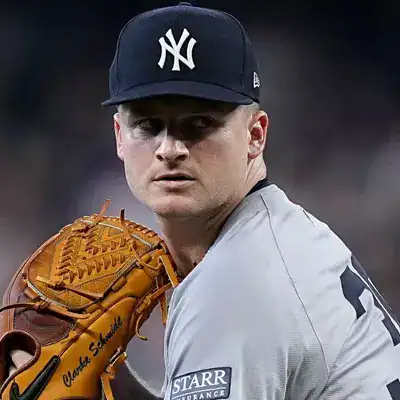
NY Yankees: Clarke Schmidt (RHP)
- Record: 2–2
- ERA: 3.95
- WHIP: 1.27
- Innings Pitched: 43.1
- Strikeouts: 42
- Walks: 20
- Home Runs Allowed: 5
Team Performance Snapshot
Which team is playing better baseball? Overall, the Yankees have the Guardians beat. Look below for how they compare!
| Category | Yankees | Guardians |
|---|---|---|
Batting Average | .258 | .234 |
Runs Scored | 322 | 237 |
Home Runs | 97 | 61 |
On-Base Percentage (OBP) | .343 | .307 |
Slugging Percentage (SLG) | .467 | .378 |
Team ERA | 3.58 | 4.05 |
WHIP | 1.18 | 1.38 |
Players to Watch
Will there be any players who knock it out of the proverbial park during the game? Here’s who we’re clocking:
Cleveland Guardians
- José Ramírez (3B): .330 AVG, 11 HR, 29 RBI
- Carlos Santana (1B): .262 AVG, 7 HR, 29 RBI
- Steven Kwan (LF): .308 AVG, 5 HR, 21 RBI
New York Yankees
- Aaron Judge (RF): .387 AVG, 21 HR, 50 RBI
- Cody Bellinger (LF): .253, 8 HR, 32 RBI
- Anthony Volpe (SS): Volpe is doing work lately and is contributing big to his team
Recent Trends & Insights
The Guardians came up short, and the Yankees got just enough at the plate and hung on through the final innings. Clarke Schmidt gets the ball for New York next, and Cleveland will attempt to tie up the series behind Luis Ortiz.
Guardians
Cleveland dropped the opener 3–2 after going 1-for-7 with runners in scoring position. They’ve scored three runs in four of their last five games, with limited extra-base damage in close spots. Prior to this series, they wrapped up a 4–2 win against the Angels behind a José Ramírez homer and 6 2⁄3 innings of one-hit ball from Gavin Williams.
Yankees
New York has won 11 of its last 15 at Yankee Stadium and keeps striking in the early innings; they’ve scored first in six straight. They beat Cleveland behind Carlos Rodón’s six innings of two-run work and a go-ahead RBI double from Gleyber Torres in the sixth. This was after closing out the Dodgers series with a 7–3 win, where DJ LeMahieu went 4-for-4 and Ryan Yarbrough gave them six.
Pitching Matchup
Luis Ortiz (2–6, 4.40 ERA) gets the ball for Cleveland. He’s allowed three earned runs in three straight starts and issued nine walks during those games. Clarke Schmidt (2–2, 3.95 ERA) counters for the Yankees and has held opponents to two earned runs or fewer in three of his last four outings.
Injuries
Giancarlo Stanton is still out with elbow inflammation and is on the 60-day IL. The Yankees bullpen is also down Luke Weaver, who’s dealing with a hamstring strain. Fernando Cruz might be activated to fill a relief spot.
Best Bets
Where do we think the value is in this matchup? Look below for our best bet picks!
- Yankees -1.5 (+165) – If Schmidt can pitch into the sixth inning and the bullpen doesn’t whiff it, New York has enough run production to cover.
- Over 8.5 Runs (-135) – There are a lot of questions about Ortiz’s control, and New York devours fastballs. If Cleveland adds anything, this number has a really strong chance of hitting.
- Aaron Judge Homers – Judge has already launched 21 homers so far this season, and Yankee Stadium’s right-field setup works in his favor. Since Ortiz’s walk rate and tendency to leave pitches up is, all it takes is one pitch in the wrong spot and see ya!
Closing Thoughts & Betting Recap
Schmidt has been much better lately at working out of traffic, and if he keeps the ball in the yard? Cleveland’s lineup ranks near the bottom of the league in home runs, so he should get through five or six innings. Ortiz has walked seven batters during his last two outings, and if he puts runners on for Judge or Soto, it won’t take much to put runs on the scoreboard.
We like the Yankees -1.5 at plus money and will ride the over if lineups stay locked and loaded. Judge to homer again is always in play because he’s been hitting rockets, and Ortiz, um, has some control issues when he’s on the mound.
Final Score Prediction: Yankees 6, Guardians 3
– New York takes control by the fifth inning
– Schmidt gives them five innings with only a couple of runs allowed before turning it over
– Cleveland gets runners on base early but can’t quite deliver with men in scoring position
Don’t just watch the game—bet it! Head over to our recommended betting sites and get your wager in.
Zverev vs. Djokovic Prediction June 4, 2025 – Roland Garros Quarterfinal
Love him or hate him, Novak Djokovic is one of the best tennis players in the world, and this man can take the heat on and off the court. The more pressure he’s under? The better he plays.
On the other side of the Roland Garros clay will be Alexander Zverev, who has spent the last two seasons supplying Djokovic with a ton of pressure. They face off again in Paris and are basically dead even in terms of a matchup. Djokovic wants to extend his legacy, and Zverev wants to get one Grand Slam under his Adidas tennis whites. Both are playing well, and sportsbooks show how close the margins are.
Keep scrolling to see all of the details about the match, who we think will win, and the best bets if you’re wagering on it!
Match Details
- Date: Wednesday, June 4
- Time: Not before 1:00 pm ET
- Venue: Court Philippe-Chatrier, Roland Garros
- Surface: Clay
- Broadcast: TNT Sports, TruTV, HBO Max (USA); Eurosport (UK); TSN, RDS (Canada)
Betting Odds
The markets are split, but here are the latest odds via FanDuel:
Moneyline
- Novak Djokovic -116
- Alexander Zverev -105
- Total Games Over/Under: 40.5
This probably will change, so check with the books to see if there’s any movement leading up to first serve!
Head-to-Head Snapshot
Djokovic and Zverev’s stats on the court? Djokovic is ahead, but Zverev has beaten him three times, so you have to factor that in—it’s not nothing.
- Overall: Djokovic leads 8–5
- On Clay: Even at 1–1
- At Majors: Djokovic up 3–1
- Recent Trend: Zverev has taken 3 of the last 4, including a Melbourne win this year (via retirement)
Player Form & Stats
Where are these two tennis players in terms of physicality and headspace? Look below!

Novak Djokovic
- Age: 38
- This Tournament: Into his 19th French Open quarterfinal, and has 100 match wins at Roland Garros
- Last Match: Beat Norrie handily, 6-2, 6-3, 6-2
- Service Hold Rate: 91%
- Break Points Faced: 12 total, saved 10
- Fitness Notes: No lingering wrist issues. Movement has looked good through four rounds. Energy conservation has been his priority.

Alexander Zverev
- Age: 28
- French Open 2025: Advanced past Griekspoor (retired in Round 4)
- Spring Form: Runner-up in Munich, quarterfinals in Rome
- Service Hold Rate: 91% (tied with Djokovic)
- Baseline Exchange Wins: 53% in rallies over 9 shots
- Physical Notes: Zverev hasn’t had any injury timeouts, no medicals, and no drop-off in later sets. Looks like a clean slate.
Tactical Breakdown
Tennis is a tactical game, so let’s see where the two players could either overpower or fall short.
- Djokovic: He’s hands down one of the best returners in the game, and he knows how to push Zverev wide early in rallies. His depth control on clay makes him tough to open up. The longer he stays in neutral, the more he relies on shot tolerance and angles to force errors from opponents. His mental edge is excellent and always has been.
- Zverev: This man has a gorgeous serve and backs it up with really good play from the baseline. His backhand can go cross or down-the-line with no setup needed, which keeps Djokovic from dictating the direction. And recently, he’s stopped playing it safe in later sets. He’s proven he can beat Novak three times out of four, and that’s not nothing.
Best Bets
Could this be a long one? You bet. Speaking of bets, here’s where we think the smart money is!
- Over 40.5 Total Games (-110) | Both are holding serve at 91%. There won’t be a lot of breaks there, and tiebreaks or 7-5 sets feel really likely.
- Match to Go Over 3.5 Sets (-160) | They’ve only played a straight-sets match once since 2018, and that alone suggests a minimum of four sets.
- Alexander Zverev to Win (-105) | Like we said, Zverev’s won three of the last four. He’s got a monster serve, and his movement on clay (which is the slowest surface in tennis) has been the best it’s looked in years. At near even odds? There’s an upside to backing the younger player.
Zverev vs. Djokovic: Who Has the Advantage?
Djokovic has been here so many times he could probably play Roland Garros in his sleep, so that’s one advantage for him. But Zverev’s not been playing like he is on a mission to win. Serve for serve, rally for rally, they’re pretty much dead even. If it goes longer than four sets, Zverev’s youth and the fact that he’s bested Djokovic before give him the upper hand, even if it’s only a slight one.
Final Prediction
- Winner: Alexander Zverev
- Sets: Zverev in 4
- Confidence Level: Medium-High
- Betting Combo: Over 3.5 Sets + Zverev ML (small parlay or split units)
Don’t forget to check the latest odds and lines, and as always, please gamble responsibly!
NBA Finals Game 1: Pacers vs. Thunder Prediction – June 5, 2025
Who woulda thunk that we’d have a Midwest mashup in the NBA finals? Not us! And certainly not the fans.
The general online sentiment? No one wants to see a Pacers vs Thunder final. People wanted to see at least one big franchise team. The Knicks would’ve fit that bill. They would’ve settled for the Wolves. But they got what they got, and it’s Indiana against OKC.
Unexpected? Yup. The fans of the teams are elated, so that’s something! And we think it’ll be a good series with two squads with completely different styles of ball play. We’re excited, even if a lot of bball fans wanted it to go another way.
So, who do we think is the frontrunner for taking home the Larry O’Brien Championship Trophy? We have some thoughts, so keep reading for everything you need to know about the opener!
Game Details
Here’s when, where, and how to watch Game 1:
- Matchup: Indiana Pacers vs. Oklahoma City Thunder
- Series Status: Game 1 of the NBA Finals
- Date & Time: Thursday, June 5, at 8:30 pm ET
- Location: Paycom Center, Oklahoma City
- Broadcast: ABC
Team Overviews
First up is how the Finals matchup lines compare! Look below for the team’s regular and postseason records, playoff runs, and the players who are pivotal in getting them to this point.
Indiana Pacers
- Regular Season Record: 50-32
- Playoff Path: Beat the Knicks 4–2 in the Eastern Conference Finals

Key Players
- Tyrese Haliburton: Averaging 9.2 assists per game, and keeps the offense organized and efficient. He’s setting the pace and creating clean looks for everyone around him.
- Pascal Siakam: Earned Eastern Conference Finals MVP honors with 20.2 points per game on 51.9% shooting. He’s been their most consistent player on both ends.
Oklahoma City Thunder
- Regular Season Record: 68-14
- Playoff Path: Knocked out the Timberwolves 4–1 in the Western Conference Finals
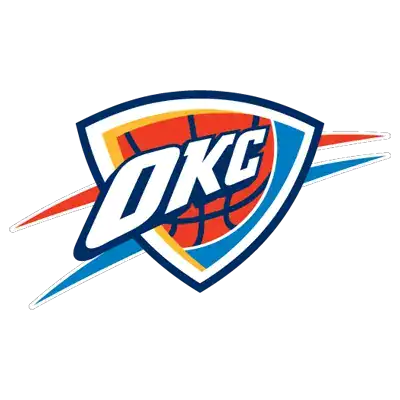
Key Players
- Shai Gilgeous-Alexander: SGA is this year’s MVP and is averaging 32.7 points per game and has been the focal point of OKC’s offense during the postseason.
- Jalen Williams: Named to the All-NBA Third Team and All-Defensive Second Team. He’s made a huge impact on both ends, guarding top assignments and doing his part as a secondary scorer.
Head-to-Head Matchup
Oklahoma City won both regular-season games, and they didn’t have to reach for much to get it done. Their length on the perimeter disrupted Indiana’s spacing, and the Pacers had a lot of trouble getting clean looks once they were forced into late-clock possessions.
If Indiana wants to change the dynamic, it’ll need not to stand still. That means more off-ball action for Haliburton, earlier touches for Siakam, and fewer one-pass sets. OKC doesn’t give you much time to figure things out mid-possession, so the Pacers have to force movement, both theirs and the Thunder’s, right after the ball goes up.
Betting Odds & Insights
If you are gonna put some money on Game 1, here’s where the odds and lines currently sit on ESPN BET:
| Team | Spread | Moneyline | Total |
|---|---|---|---|
Pacers | +9.5 (-115) | +320 | Over 231.5 (-105) |
Thunder | -9.5 (-105) | -425 | Under 231.5 (-115) |
- Point Spread: Thunder -9.5
- Over/Under: 230.5 points
- Moneyline: Thunder -450, Pacers +340
- Series Odds: Thunder -700, Pacers +500
- Finals MVP Favorite: Shai Gilgeous-Alexander
Best Bets
And here is where we think the smart money is if you’re betting on this game:
- Thunder -9.5 Spread – OKC’s won their last five at home by double digits. If they get clean looks early and keep Indiana from settling in? This line could cover by the third.
- Over 230.5 Total Points – There aren’t grind-it-out squads; both push the pace, shoot early, and don’t waste too many possessions. Barring a cold shooting night, the over is very much in play.
- Shai Gilgeous-Alexander Over 33.5 Points – He’s averaging 32.7 in the playoffs and never gets slowed down for long. Because Indiana is short on wing defenders who can stay in front of him, this number is within reach again.
X-Factors
Yes, a lot of games are decided by the biggest names, but in this case? Two star players could cancel each other out!
- Pacers: Haliburton has to keep the offense moving without letting OKC force him into bad spots. That means good decisions with the ball, being patient under pressure, and finding ways to create space, and not just for himself, but for everyone else on the court.
- Thunder: Williams will be asked to take on top matchups defensively and still make an impact offensively. He doesn’t need to take over totally, just remain active, pick the right moments, and give OKC flexibility on offense and defense.
Historical Context
It’s been a long time coming for both the Pacers and the Thunder.
Indiana hasn’t made it to the Finals since 2000, when they lost to the Lakers in six games. A lot has changed since then; there’s a new front office, a new identity, and a team that’s built around speed and spacing instead of post play. For Pacers fans, this run has already broken through years of playoff stalls.
Oklahoma City is still chasing its first NBA title. The Thunder made it to the Finals in 2012 with Durant, Westbrook, and Harden, but haven’t been back until now. This version of OKC, which was built through the draft and developed in-house, feels like a new shot at history. For the franchise and its fans, it’s a chance to bring home something that’s eluded them for over 10 years.
Final Thoughts & Game 1 Prediction
Final Score Prediction: Oklahoma City Thunder 116 – Indiana Pacers 104
The Thunder cover the spread, and the total lands just short of 230.5.
It’s gonna be an interesting series! The Pacers rely on ball movement and spacing to find shots, but Oklahoma City has been the most disciplined defensive team in the playoffs. They contest everything and force teams into second or third options. At home, they’ve pulled ahead by double digits before halftime in four of their last five.
Indiana needs to keep it within five or six by the break. If they fall behind by 10+ going into the third, they’ll have a really hard time coming back.
Betting Recap
- Spread: Thunder -9.5
- Total: Over 230.5
- Prop: Shai Gilgeous-Alexander Over 33.5 points
Best Bet: Thunder -9.5
The matchup favors OKC, and their track record at home speaks for itself.
Ready to place a wager on this year’s NBA Finals? See our recommendations for the top-rated betting sites to get the best odds and generous bonuses.
2025 RBC Canadian Open Picks & Predictions: Who Will Triumph at TPC Toronto?
The RBC Canadian Open is one of the oldest and most respected stops on the PGA Tour, and in 2025? It’s a brand new chapter. For the first time, the tournament will be taking place at the TPC Toronto at Osprey Valley’s North Course, so it’ll be a new test for the heavy-hitter contenders. This year’s edition runs from June 5–8, and it features big names like Rory McIlroy, Scottie Scheffler, Robert MacIntyre, and a built-for-competition Canadian group, all of whom want to walk away with the title.
There are PGA Tour points, hometown pride, and a lot of betting opportunities on the line, so it’s not an average stop on the golf tourney calendar! We are gonna unpack the field, the new venue’s green, top picks, value plays, and a few prop bets that look interesting to us!
Final Field Highlights
Who’s teeing off? This year’s player list has a great mix of past champions, up-and-coming stars, and some homegrown talent.
- Rory McIlroy: Already a two-time winner of this event (2019, 2022), McIlroy is back with a chance to make history. His ability to adapt to new courses gives him a real advantage at TPC Toronto.
- Robert MacIntyre: The 2024 champion is back and wants a repeat win. He hasn’t had the same consistency this season as last, but he does know how to finish off the big events.
- Scottie Scheffler: He’s the current world No. 1 and the betting favorite. He’s finished inside the top 10 in eight straight starts and shows up strong every week.
- Nick Taylor: Won the tournament in 2023 and is one of Canada’s most popular players. The crowd will be behind him, so Taylor could put himself in the running again, no problem.
- Corey Conners: Canada’s top-ranked player and one of the most reliable ball strikers on tour. He’s really well-suited for a course that calls for accuracy.
Other notable players in the field include Ludvig Åberg, Sungjae Im, Tom Kim, Shane Lowry, Tommy Fleetwood, and a total of 21 Canadian players, which is the most ever in a Canadian Open field!
Course Overview: TPC Toronto at Osprey Valley (North Course)
TPC Toronto will make its debut as the host, and the North Course is expected to offer a different kind of test than the past courses.
- Par: 70
- Yardage: 6,966 yards
The North Course doesn’t overpower players with length, but it does reward strategic golf. Greens are firm and fast, and players will have to manage their positioning and strokes carefully. The layout places a premium on ball striking, wedge control, and putting touch. It has tree-lined fairways and challenging green complexes, and the players who can think their way around the course are the ones who are most likely to be in contention.
Projected Winner
Who’s the projected winner? No surprise here.
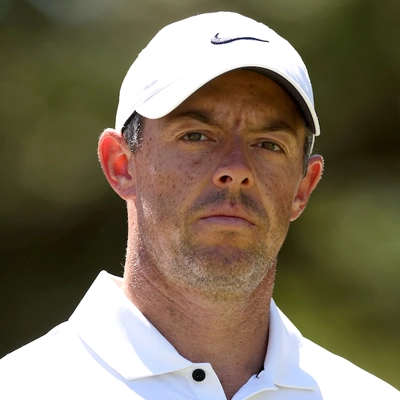
Rory McIlroy
McIlroy has always played really well in Canada, and he’s arriving at TPC Toronto in great shape. His driver gives him a huge edge on wider fairways, and he’s one of the best in the field at capitalizing on scoring chances. His track record on courses he hasn’t seen before is also a plus, and he adapts quickly and usually meets the moment.
After finishing in the top five in three of his last four starts, Rory looks ready to make a serious run. His ability to stay aggressive without taking any unnecessary risks works well with this course layout. Add in the fact that Canadian fans love him, and you’ve got a strong case for another McIlroy win.
Best Bets
Now for the best bets! The three below have the most value. They’re based on the duffers’ recent form, course fit, and are courtesy of DraftKings.
- Rory McIlroy to Win (+450) | McIlroy has the form, experience, and game to win at a course like this. His past wins in Canada, combined with his current play, make this a really strong play even at shorter odds.
- Ludvig Åberg Top 10 Finish (+150) | Åberg has posted three top-10 finishes in his last six starts and has shown the kind of control that plays well on a course like TPC Toronto. He’s calm under pressure and doesn’t give any shots away.
- Nick Taylor Top 10 Finish (+360) | This is a big number for someone who’s won here before and will have the full support of the fans in the crowd. He’s not always consistent, but on familiar ground, Taylor is a nightmare for other golfers.
Best Prop Bets
If you want to bet on something other than the outright winners, the props below give you some more fun ways to stay involved during the tourney!
- Top Canadian Finisher – Corey Conners | Conners is ranked higher than any of the other Canadian entrants and has been solid during the season. His ball-striking fits this course better than most, and he’ll have no trouble handling the local expectations.
- First Round Leader – Ludvig Åberg or Tom Kim | Both golfers have made a habit of low rounds early in tournaments. If you’re looking to take a flier on a strong start, these two are among the most likely to set the pace on Thursday morning.
- Winning Margin – 1 to 2 strokes | The Canadian Open usually stays close, and with this year’s field full of talent, it’s pretty unlikely that we’ll see a blowout. A close finish is a smart play at plus odds.
How to Watch
The RBC Canadian Open will be broadcast in multiple countries, and here’s where you can watch all of the action!
- United States: Coverage all four days on Golf Channel, with weekend rounds also airing on CBS.
- Canada: TSN and CTV will carry full coverage, including featured group streams.
- United Kingdom: Sky Sports Golf will handle the full event broadcast for UK viewers.
Betting Odds Snapshot
| Player | Odds to Win |
|---|---|
Ludvig Aberg | +1400 |
Rory McIlroy | +450 |
Robert MacIntyre | +2800 |
Nick Taylor | +4500 |
Corey Conners | +200 |
Note: Be sure to keep checking the latest odds as they can change.
RBC Canadian Open 2025: Final Picks & Best Value
This year’s Canadian Open has a strong field and a course that will put extra pressure on approach play and touch around the greens. There are generous fairways and fast, undulating greens, so the players who are able to control their irons and not make mistakes around the putting surfaces should be near the top of the board by Sunday!
Our Final Picks
Here’s where the betting value sits:
- Outright Pick: Rory McIlroy: Proven past success in Canada, great recent form.
- Top 5 Bet: Scottie Scheffler: Super-consistent and is always in contention.
- Top 10 Bet: Ludvig Åberg: Versatile, disciplined, and in great form.
- Top 10 Bet: Nick Taylor: Can ride home-course support right into contention.
- Best Prop: Corey Conners as Top Canadian: Strong track record and all-around game.
- Longshot – Tom Kim: Has the ability to string together birdies and could surprise the field.
We feel good about where the value sits heading into this year’s Canadian Open. McIlroy’s track record in Canada and recent form make him a solid outright target, and Scheffler’s consistency speaks for itself. Conners fits this course well, and Nick Taylor brings real potential as a top-10 play with the crowd cheering him on.
Keep an eye on line movement throughout the week, as odds can shift once early rounds get going. If you’re betting, don’t just grab the first number you see. Shop across the most reputable online sportsbooks, check live updates, and be flexible!
This year’s event has the pieces to deliver a close finish and some really great betting spots. We can’t wait to see who steps up on the new turf at TPC Toronto!
Mets vs. Dodgers Betting Preview & Prediction – June 3, 2025
LA gets to witness a heavyweight National League matchup as the Mets go west to face the Dodgers at Dodger Stadium. The two clubs met a few weeks back, and New York grabbed two of three games in Queens. Now it’s L.A.’s turn to try and get some wins at home, and this time? Clayton Kershaw is back on the hill for his season debut.
There are playoff implications on the line and plenty of star power on both teams, so this one could turn on late-inning execution, bullpen matchups, or a big swing from any of the elite bats that are in the lineup.
Game Details
- Matchup: New York Mets vs. Los Angeles Dodgers
- Date & Time: Tuesday, June 3, at 10:10 pm ET
- Location: Dodger Stadium, Los Angeles, CA
- Broadcast: TBS
- Weather Forecast: Clear skies, 66°F, light breeze
Probable Pitchers
Who’s throwing? Unless something changes, these two:
Tylor Megill (NYM) – 4–4, 3.52 ERA
Megill’s been holding his own in a patched-together Mets rotation. His previous two outings included six shutout innings in Arizona and seven strikeouts in a win over the Dodgers on May 24. His fastball command has gotten better, and he’s kept the ball in the park; he only allowed one homer in his last four starts.
Clayton Kershaw (LAD) – 0–0, 4.91 ERA
Kershaw makes his first home start of 2025 after returning from an injury. He went 3.2 innings against the Rockies last week, giving up two earned runs. He’s likely on a pitch count again, which could mean that the Dodgers’ bullpen gets tested in the early innings.
Team Overviews
Below is how both clubs have been trending up until this game:
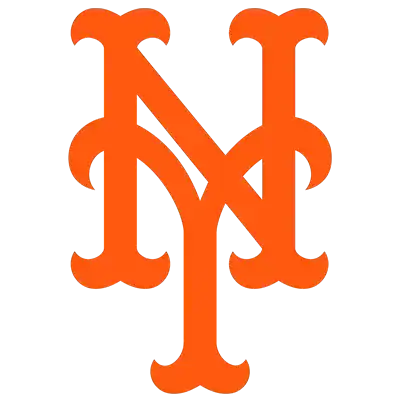
New York Mets (37-22)
The Mets are coming off a strong run, right off a series win in Arizona, and with a 7–3 record in their last 10 games. Even without Montas and Manaea, the rotation has posted the second-lowest ERA in baseball (2.91). Lindor, Alonso, and Soto have been good at the plate, and the bullpen’s held firm in late innings.
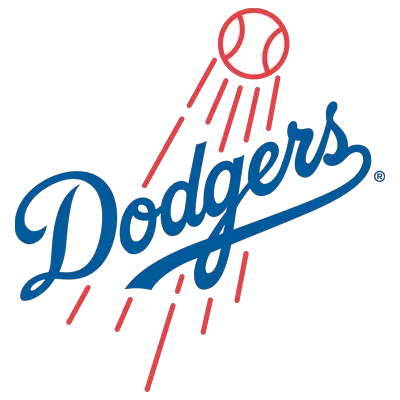
Los Angeles Dodgers (36-23)
The Dodgers are back at home after a 3–3 road trip that saw a series loss in New York. They’re 21–9 at Dodger Stadium this year and have been really hard to beat when Ohtani or Freeman are producing. But the pitching staff has been stretched really thin, and Kershaw’s return could be a relief.
Head-to-Head Matchup
What happened the last time these two met? The Mets took two of three from the Dodgers from May 23–25 at Citi Field. New York’s starters kept L.A.’s lineup contained, and Pete Alonso homered twice in the series. Ohtani went hitless in two of those games, and the Dodgers’ bullpen was charged with losses in both defeats.
Betting Odds & Lines
Betting on this one? Here are the latest odds and lines via Caesars Sportsbook:
| Team | Run Line | Moneyline | Total Runs |
|---|---|---|---|
Mets | +1.5 (-146) | +132 | Over 9 (-110) |
Dodgers | -1.5 (+122) | -160 | Under 9 (-110) |
- Moneyline: Dodgers -160 | Mets +132
- Run Line: Dodgers -1.5 (+122) | Mets +1.5 (-146)
- Over/Under: 9 runs (Over -110 | Under -110)
Betting Trends
- Mets: 7–7 as underdogs this year, 9–4 in their last 13 overall
- Dodgers: 30–18 as favorites, 6–4 in their last 10 at home
- Head-to-head: The Mets have won 3 of their last 4 meetings with the Dodgers
Players to Watch
Who’ll make the biggest impact in this matchup? Here are the players we’re watching!
Mets
- Francisco Lindor: 13 HRs, .282 AVG, 34 RBIs
- Pete Alonso: .288 AVG, 12 HRs, 46 RBIs
Dodgers
- Shohei Ohtani: 22 HRs, .293 AVG, 37 RBIs
- Freddie Freeman: .365 AVG, .624 SLG
Best Bets
And here are the three best value plays we are backing during the game:
- Mets +1.5 Run Line (-146): Megill’s been reliable, and the Mets already handled this matchup before. Getting a run and a half feels pretty safe with their current form factored in.
- Under 9 Total Runs (-110): Megill is on the mound, and Kershaw is unlikely to pitch past the fifth, so both teams might have to rely on their pens to keep the game close.
- Francisco Lindor to Hit a Home Run (+450): He went deep last time the teams played and has been squaring up against southpaws when he’s at the plate.
Closing Pitch: Who Has the Edge Tonight?
The Mets are playing better and have already beaten the Dodgers this season. Megill’s been super dependable.
If Kershaw has a hard time or exits early, the Dodgers don’t have enough behind him, so New York is looking like the stronger side right now.
Final Score Prediction: Mets 4, Dodgers 3
Please make sure to always bet responsibly. If you’re looking for a trusted sportsbook to place your wagers check out our list of recommended sports betting apps for competitive odds and bonuses.
Cleveland Guardians vs. New York Yankees Prediction (June 3, 2025)
The Yankees open a three-game set at home against the Guardians in what could turn into an early postseason litmus test for both clubs. New York has been on fire when they’re at home in the Bronx, which is where they’ve built one of the best home records in baseball.
And Cleveland is holding its own in a competitive AL Central, and they’re coming hoping to shake off some uneven outings and get back on track with a win. Between Rodón’s recent stretch and the production New York’s getting from the middle of the order? This game has a lot to work with on the board!
Keep scrolling for everything you need to know about the Guardians vs the Yanks!
Game Details
- Matchup: Cleveland Guardians vs. New York Yankees
- Date & Time: Tuesday, June 3, at 7:05 pm ET
- Venue: Yankee Stadium, Bronx, NY
- Broadcast: TBS
- Weather: Clear skies, 74°F at first pitch
Starting Pitchers
The Guardians and Yankees are both in the playoff picture, so Game 1 of the series should be a good one. Let’s take a look at the starting pitchers and what they’re dealing!
Carlos Rodón (NYY)
- Record: 7-3
- ERA: 2.60
- WHIP: 0.94
- Strikeouts: 90 in 72.2 IP
Rodón’s arm is one of the best, and he’s gone 3-0 with a 0.50 ERA over his last three starts, overpowering hitters and working ahead in counts. The southpaw’s fastball-slider combo has been hard to hit.
Tanner Bibee (CLE)
- Record: 4-5
- ERA: 3.86
- WHIP: 1.27
- Strikeouts: 50 in 63.0 IP
Bibee had a great effort against the Yankees back in April; he went six innings and gave up only one run. But his recent outings have been a mixed bag, and he’ll need to be on from the first pitch to keep the Yankees’ lineup contained.
Key Players to Watch
Here is who we’ll be watching during the game:
Yankees
- Aaron Judge: .391 AVG, 21 HR, 50 RBI
- Paul Goldschmidt: .333 AVG, 6 HR, 28 RBI
Guardians
- José Ramírez: .327 AVG, 11 HR, 29 RBI
- Carlos Santana: .262, 7 HR, 29 RBI
Team Stats Comparison
Next up? Looking at both teams’ stats side by side!
| Category | Yankees | Guardians |
|---|---|---|
Record | 36-22 | 32-26 |
Home/Away Record | 18-9 (Home) | 15-15 (Away) |
Batting Average | .259 | .234 |
Runs Scored | 319 | 235 |
Home Runs | 95 | 61 |
Team ERA | 3.60 | 4.06 |
WHIP | 1.19 | 1.39 |
Betting Odds & Trends
According to DraftKings Sportsbook, here’s where the betting odds and trends sit:
| Team | Run Line | Moneyline | Total Runs |
|---|---|---|---|
Guardians | +1.5 (-142) | +150 | Over 8 (-115) |
Yankees | -1.5 (+120) | -180 | Under 8 (-105) |
Trends
- Yankees are 20-12 in night games
- Guardians are 17-15 in night games
- The Yankees have won 66% of games as moneyline favorites this season
Best Bets
Your best bets? There are three that we think look pretty good!
- Yankees Moneyline (-150): When you pair Rodón’s current run with the Yankees’ home performance, it gives New York the upper hand. If the bullpen holds? They’re in a good spot to take Game 1.
- Under 8.5 Total Runs: Rodón’s been stingy, and Bibee has shown he can navigate this lineup if he’s locating early. With cooler weather expected, the under feels like a smart play.
- Aaron Judge to Hit a Home Run (+250): Judge is clocking the ball well, has crushed righties at home, and this is the kind of game where he’s known to bring his A game. At this price, there’s good value in backing him to go yard.
Final Thoughts & Game Prediction
Rodón has allowed only one run across his last three starts and keeps pounding the zone, and hitters never know what he’s gonna throw. The Yankees have scored five or more in four of their last five home games, with Judge driving the offense. Bibee held them to two runs back in April, but if he falls behind in counts? New York’s lineup can take advantage of that.
If Rodón stays in command and the Yankees keep turning base runners into runs, they should be in front by the fifth inning.
Final Score Prediction: Yankees 4, Guardians 2
This one will be a close game during the first five innings. But with Rodón on the mound and Judge on the the offense? The Yanks are in a better position to pull ahead in the second half and get this win.
Note: All stats and odds are current as of publication, but you should always verify the latest lines before you place your bets!
Dealer Tells in Live Blackjack – Real or Fantasy?
Have you ever witnessed a blackjack player who is straight-up staring at the dealer? Either they are crushing on them or, more likely, they are trying to “read” their every move. The idea of spotting a tell in blackjack, aka a subtle sign that leaks the dealer’s hole card, is as attractive as it is controversial. Who wouldn’t love the notion of having a secret advantage?
If you can interpret the dealer’s body language or card-handling, maybe you can predict if the dealer is about to bust or has blackjack. And this very topic causes debates in casinos and online forums.
If you aren’t familiar with what dealer tells are, don’t worry–we’ll explain. What they supposedly are, why our brains are primed to believe in them, how live table play compares to online streams, and what the poker pros think. We’ll get into psychological research, expert opinions, and real-life examples, too! You’ll also get some practical advice on what matters at the blackjack table, and if a dealer’s tell belongs on this list.
What Are ‘Dealer Tells’ in Blackjack?
In poker, a “tell” is any unconscious cue– it could be a twitch, a glance, or a change in a person’s demeanor that hints at a player’s hand strength. The concept comes from poker, where players watch opponents intently for subtle body language. In blackjack, some players try to apply the same idea to the dealer. A dealer tell is the idea that the dealer might give off involuntary signals about the value of their hidden card. Players might watch how the dealer handles cards, their facial expression, or how long they pause when checking for blackjack.
Some common examples people look for include a dealer momentarily hesitating over the hole card (a “peek hesitation”), placing cards at a different angle, or the tone of the dealer’s voice. The thought is that these minute details could reveal whether the dealer has a strong hand or not.
However, it’s important to note that blackjack gameplay is fundamentally different from poker: the dealer is not playing against the player, but against fixed rules. They only peek at the hole card to check for blackjack (if the rules allow it), and there’s no real decision-making or “strength” in their hand as there is in poker.

Where the Term Comes From
The type of game also matters. In a physical casino, you have the best view of the dealer: you can watch their entire body language, hear their voice, and see exactly how they shuffle and cut the cards. In principle, this gives you more cues to observe. Dealers are trained professionals who shuffle and deal with consistent motions, and casinos train them not to give away any information through their actions.
In an online live dealer game (a real dealer streamed via video), you only see the dealer through a camera at one or two angles, and a lower resolution. Body language cues are way harder to detect on screen, and the dealer’s face and hands might not be in full view. Still, even online, some players claim that they notice subtle patterns.

What Blackjack Tells Can Look Like
A “dealer tell” in blackjack refers to any involuntary habit or gesture by the dealer that players think might indicate the dealer’s hidden card. But because the dealer’s role is largely mechanical and supervised, any signals are usually coincidental or imagined. We’ll explore why we’re inclined to see patterns where none may exist – and what experts have to say about all this.
The Psychology of Tells: Why Players Want to Believe
Why do we even look for tells? Human brains are excellent pattern-seekers–sometimes too excellent. Psychologists call this tendency apophenia: seeing patterns or connections in random data. In gambling, where outcomes are governed by chance, our minds still crave a bit of order and meaning. We hate randomness and want to feel in control of the outcome. This can lead to the illusion of control: the misplaced belief that we can influence purely random events.

The Illusion of Control in a House Game
In blackjack, this manifests as a hope that maybe something we do (or notice) could swing the odds. Spotting a dealer’s twitch as a cue gives an immediate feeling of empowerment, even if it’s just a coincidence. It’s also comforting to imagine that the dealer’s human side is leaking hints. But the reality is, the dealer’s cards are random, and only mathematical strategy (not body language) truly affects the odds.

Survivorship Bias
Cognitive biases reinforce belief in tells. For example, survivorship bias kicks in: people tend to remember the few times a “tell” seemed to work and forget the many times it didn’t. If you hear a story that “I folded because the dealer looked nervous – he had a 20!”, you’ll remember that success story. You’ll never hear about the dozens of times a dealer looked nervous and had a low card or a bad hand. Survivorship bias leads us to believe there’s a “magic” pattern or secret, even though it was just random chance that once aligned with our actions.
All these psychological factors, such as pattern recognition, the illusion of control, and survivorship bias, make the dealer tell a really popular myth. We want them to be real because it feels better than accepting the house has the edge, no matter what. But as we’ll see, experts and science suggest that tells are mostly figments of our overactive imaginations.
Live Casino vs. Online Live Dealer Tells
In an in-person casino, you can scrutinize a dealer up close: their hand movements, facial expressions, even subtle cues like how they hold their breath. In theory, this helps you pick up on micro-tells. The advantage is the full sensory input – you hear every sound, see every movement.
However, in practice, there are big drawbacks. Casinos train dealers to use very uniform dealing motions and to be neutral in expression. Many dealers are essentially robots with dealer training; they aim to shuffle, cut, and deal cards in exactly the same way every time. Experienced dealers know how players watch for cues, so they actively avoid fidgeting or showing emotion. In other words, they’re taught not to give away any clues.
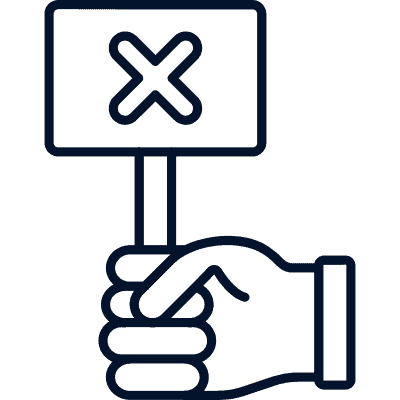
The Case Against
Another in-person issue is risk: if you stare at or interact with the dealer too much, it might draw unwanted attention. Dealers sometimes resent being watched or tipped just to try and get an edge. In the forum of professional players, it’s said that if a dealer becomes annoyed with you – say you tip in a way to get them involved – they might actually make mistakes, but they could also start shorting you on payouts. So, reading a live dealer is not only hard but also can backfire if done overtly.

Online Live Dealer Blackjack
Online live dealer blackjack has grown in popularity, especially where in-person casinos are scarce. In these games, a real dealer handles cards that are live-streamed from a studio. The pros are convenience and a selection of games.
But how about tells? The cons are significant: you usually get only a couple of fixed camera angles, often not giving a great view of the dealer. The video quality or frame rate may not capture micro-expressions or slight differences in handling cards. The dealer often deals with a shoe and inserts cards into a peeking device or plays in a manner that’s easy to watch, but players typically only see her hands and the table, not a panoramic view. Also, the interface overlays often hide parts of the layout. Even though some players insist they can “sense” patterns online, any alleged tell is far harder to verify.
An online stream also has a different psychological vibe. There’s a human on the other side, but they feel more anonymous. For example, one dealer noted in a podcast that while players sometimes shout conspiracy theories into chat (“the dealer hates me, I can feel it!”), it’s hard for even them to “read” a player through a webcam. In short, online dealers are still human and could theoretically slip up, but the digital format mostly removes the subtle in-person cues.
In both settings, it’s important to remember that trained professionals in live casinos, or dealers being watched on camera, are not going to telegraph their hole cards freely. They want to deal a fair game without creating suspicion. The few players who do claim to notice online “tells” are extremely rare exceptions or misunderstand normal dealer actions.
Common Alleged Dealer Tells (And Why They Might Not Matter)
A lot of blackjack fans have a whole entire checklist of “tells” to watch out for. The following are some of the most commonly alleged clues–and why you should always take them with a grain of salt!
👀 Peek Hesitation
When the dealer checks for blackjack (peeks at the hole card) or double-checks a card, players sometimes look for a pause or hesitation. The myth is that if the dealer lingers, maybe they see an Ace or 10-value card underneath, and if they flip quickly, maybe it’s a low card. In reality, modern casinos have a peeking device with a mirror or sensor. The dealer slips the card into the peeker and often hears a simple beep if there’s blackjack – no guesswork involved.
The device only shows a tiny bit of information and is designed so that players can’t actually see the card. As one well-known blackjack source bluntly put it, the peek device “gives the poor dealer nothing but ‘tells’ that exist solely in the mind of the desperate player’s imagination.” Any slight delay or double-look is usually just a habit or the dealer being careful, not a coded message. Don’t count on it.
🃏 Card Placement
Some players watch how the dealer places cards on the table. For example, a player might think, “If she slides the card more forcefully or flips it at a certain angle, maybe that means something about her hand.” Or they might note that the first card goes behind the bet and the second in front, and imagine that switch-up means a strong hole card. The truth is, most casinos dictate exact procedures for how cards are dealt and placed – it should be automatic.
If a dealer ever deviates, it’s almost certainly random or an accident, not a secret code. Dealers are trained to deal cards uniformly (e.g., always pitch the first card behind the marker, the second card at the front) to avoid confusion. In short, the orientation or placement of dealt cards doesn’t carry meaningful signals; it’s just part of the routine.
😐 Facial Expressions and Demeano
A slight smile, a furrowed brow, or a nod might catch a player’s eye. The myth is that a dealer’s face will tell a story – maybe a guilty-looking smile means the dealer just saw a win for you. In practice, dealers know players are watching, so they maintain a neutral, friendly face. Casinos emphasize professionalism: dealers often undergo training in consistency and “poker face” dealing. Many expert players note that veteran dealers will give nothing away – a good dealer’s expression is purposely bland.
New or inexperienced dealers might slip occasionally (yawning, laughing, or grimacing at a result), but even those are not reliable signals of the hole card. They’re just human reactions to fatigue or surprise. In short, facial cues are extremely unreliable, and any pattern you think you see is likely just a coincidence or your mind filling in gaps.
⏲ Pace of Play
Some gamblers watch how quickly a dealer deals cards or calls hits, thinking a fast pace means something (e.g., “she’s rushing because she wants the hand over”) or a slow pace means hesitation. The reality is subtler. Different dealers have different natural rhythms. A slower deal might mean the dealer is momentarily distracted or double-checking a rule, not that the hand is a certain value. A quick deal could simply mean the dealer is experienced and efficient.
Importantly, dealers often alter speed based on the table’s mood, like speeding up on low bets, slowing down on large bets to give players time. Casino policies sometimes require a steady rhythm. In sum, the speed at which a hand is dealt or played is influenced by many factors and gives no reliable information about the cards.
Each of these supposed tells can feel convincing in the moment, but they all fall prey to the same problem: they lack consistency and basis in how cards are actually dealt. As Blackjack expert Mason Malmuth cautioned, techniques like these sound powerful, but “it is quite easy to see tells because you want to rather than because they are there”.
In other words, we have a tendency to believe a random twitch or gesture is meaningful simply because it happened at the right time. Don’t fool yourself – these “tells” are often more fantasy than fact.
What the Experts Say
Professional blackjack players and dealers generally agree: dealer tells are not a reliable way to beat the game. Most authoritative sources warn that you can’t bank on them. For example, one comprehensive Blackjack guide explicitly states that “dealer tells are unreliable and should not be the primary basis for your decisions.” In other words, if you plan your whole strategy around reading subtle cues, you’re making a big mistake.

What the Pro Players Think
Experienced players often emphasize math over mystery. One educational blackjack strategy manual (from Creighton University) puts it plainly: players should focus on “mastering basic strategy and card counting over attempting to decipher subtle dealer behaviors.”
In that write-up, the authors acknowledge that it’s possible to glean tiny bits of information by watching a dealer, but they underline that such tells are “subtle and inconsistent.” They say using tells might give you only a minor edge at best, and even then, it’s very situational.
Legendary card-counting author Arnold Snyder, who edited Blackjack Forum, once published an article on the myths of tell-play. He quoted Steve Forte (author of Read the Dealer), who actually dismantled many common myths about telling. Forte believed that with the right training, one could create or spot dealer tells, but even he stressed that this requires treating it like a science, not magic.
Most modern authorities, however, don’t share Forte’s optimism. They point out that casino dealers rarely have control over the card values and are generally not trying to communicate with players.

What Dealers Think
Even casino dealers themselves scoff at player theories. On a well-known Blackjack forum, a former dealer commented (anonymously), “Casino managers are not fools…they are not going to let [dealers] somehow telegraph [the hole card] information to observant players.” He added that the peek device only shows minimal info and any “tells” a player imagines exist solely in the mind of the desperate player.” Even if a player thinks that they are seeing something? It’s usually just wishful thinking.
That said, a few veteran advantage players admit that under very special conditions, you might pick up something. Mason Malmuth described how, if you somehow get a dealer “rooting for you” (for instance, by tipping and chatting them up), the dealer might unconsciously give little cues after checking their card. “The dealer may ‘tell’ you if it is correct to hit or stand,” he wrote, based on their mannerisms after peeking.
For example, a friendly dealer who likes you and sees you have a losing hand might lean closer and suggest hitting, whereas if she sees a likely bust, she might lean away, as if saying “no more cards.” This kind of a tell would come from a human connection, not from anything inherent in the cards themselves.
But even Malmuth quickly warns that these situations are exceptions and hard to exploit. Such a strategy requires finding the right dealer and scenario, and even then, it’s unreliable. “They are not easy to master,” he notes, and if you start believing you see those signals, you might get caught in a trap of your own making. In other words, you can get fooled by random changes in a dealer’s behavior, thinking they mean something. Most professionals agree: the safest assumption is that there is no consistent tell to read.

Expert Consensus: Not Worth Betting On
Overall, nearly every blackjack expert emphasizes practice and analysis over superstition. Dealers are usually trained to minimize any variation in how they deal cards. Surveillance cameras, strict game rules, and routine procedures all work to eliminate human error or pattern. So while a curious amateur might hope for a shortcut, the consensus is clear: dealer tells are mostly imaginary or wildly inconsistent.
Are There Any Exceptions or Hidden Opportunities?
Could there be an exception to the rule? A rare dealer or situation where a tell is actually real? In theory, yes, but such cases are extremely scarce and context-dependent. Sure, a brand-new or nervous dealer might fumble a little–maybe they peek at an Ace and almost twitch, or they set a card down sloppily. An undertrained dealer in a low-traffic casino might not notice a slight slip. In these unusual cases, an observant player could notice a quirk that repeats.

The ‘Friendly Dealer’ Scenario
Some stories from experienced players illustrate this. A sympathetic dealer who likes you (maybe because you’re tipping or you’ve been chatting pleasantly) might indeed subconsciously act differently when your luck changes.
For instance, if the dealer knows you’re struggling, they might unconsciously care more and perhaps deal in a way that avoids suddenly dealing a bad hand to you. In extreme cases, a dealer with very predictable routines (say they always slide the hole card out gently vs. flip it) might inadvertently telegraph something if those habits change.
However, these are exceptions so rare that you can’t rely on them. Even if you suspect one dealer has a pattern, it might not hold when you play again or when someone else sits down. Dealers switch shifts, games, and behaviors all the time. The very tactics that might create a soft tell (like chatting and tipping to get them “involved”) are themselves risky: they draw attention from pit bosses and surveillance.

Why It’s Still Too Risky to Count On
So yes, if you happen to stumble upon an extraordinarily helpful dealer, you could exploit it briefly – a bit like catching a weak table in poker – but it’s hardly a strategy you can count on. As one expert put it, only local “advantage players” who frequent the same dealer regularly can sometimes exploit subtle habits.
For the average player, this is not practical. If anything, mentioning tipping and making friends with dealers reminds us that these “tells” are intertwined with dealer emotions and actions, not with the cards. In most casinos today, rules and random shuffles mean there are no secrets to uncover in the dealer’s behavior.
The Real Edge: Strategy Over Superstition
There are effective ways to get an edge in blackjack, and they involve math and discipline, not staring at the dealer’s nose, which is just plain rude. The single most important advantage tool is basic strategy.

Basic Strategy: Your First and Best Weapon
Basic strategy tells you the mathematically optimal move (hit, stand, double, split, etc.) for every possible combination of your hand and the dealer’s upcard. Played perfectly, basic strategy reduces the house edge to very low levels (often around 0.5% in a standard game with good rules).
For example, with a 3:2 blackjack payout and eight decks, the dealer stands on soft 17, and you can double on any two cards. Playing the perfect strategy yields about a 0.41% house edge. By contrast, ignoring basic strategy and chasing tells could spike the edge the other way.

Card Counting
If basic strategy leaves only a small house advantage, the next step is card counting, where legal. Card counting can actually swing the odds in your favor by tracking the ratio of high cards to low cards remaining in the shoe. It’s not easy and is banned or unwelcome in most casinos, but it is a proven strategy for beating blackjack. Every expert who says dealer tells are unreliable also says counting is the real way to catch a bigger edge (and of course, do it discreetly or online where allowed).

Game Selection and Rules
Other proven factors include game selection and rule awareness. Always look for games with the best rules: 3:2 payout for blackjack (never 6:5!), dealer standing on soft 17, doubling allowed after splitting, etc. These “rule-friendly” games significantly lower the house edge. As the BetMGM analysis shows, a 6:5 payout game raises the house edge to about 1.77%, whereas 3:2 has it around 0.41% under the same conditions. That single rule difference is far more important than any faint dealer gesture.
Also consider deck penetration in live games: the deeper the dealer cuts into the shoe before reshuffling, the more power card counters have. Even if you don’t count cards, deeper penetration means more predictability in the final cards – another math advantage.

Bankroll Discipline Beats Guesswork
Lastly, bankroll management and discipline are crucial. No strategy wins every hand, and losses are inevitable. The real edge comes from surviving downswings and betting wisely when you do have an advantage (like a high count). Stick to predetermined bet limits, set win/loss goals, and never chase losses with wild hunches. In essence, treat blackjack as a long-term mathematical game, not as a place for lucky guesses.
Conclusion: Dealer Tells Won’t Help You Win. This Will
Dealer tells make great stories, but they won’t move the needle on your bankroll. The real advantage? It’s not in a smirk, a pause, or a card flick—it’s in the strategy that you bring to the table. Learn the math, play the right games, and forget trying to out-stare a dealer who’s just doing their job. Blackjack doesn’t reward guesswork—it rewards players who know what they’re doing.
Here’s a brief recap of what you need to know about these so-called dealer tells:
- Dealer tells are mostly imagined or inconsistent. Any “signals” that you think you see are usually coincidences or confirmation bias, not any sort of reliable info.
- Rare tells can exist, but they aren’t dependable. Only in extraordinary cases (a nervous or undertrained dealer, or one who really likes you), a tiny clue might slip out. Even then, it’s hardly a stable strategy.
- The real edge comes from:
- Basic strategy (learn the optimal play for every hand)
- Card counting (where legal)
- Choosing the right games and rules (3:2 blackjack, dealer stands on soft 17, favorable table limits) and strict bankroll discipline. These math-based tools reliably reduce the house edge in a way that “reading body language” never will.
- Math beats superstition every single time. Stick to proven strategy and you’ll play smarter, not harder.
Blackjack is a game of cards and odds, not mind-reading. Treat dealer tells as a superstition at best, not as a way to profit. The house edge is relentless, but if you concentrate on the math, your strategy, and smart play, you have far more control than any facial cue you think you see!
Panthers vs. Oilers Game 1 Preview & Prediction (June 4, 2025)
The NHL semi-finals were a brutal battle, but two teams fought it out to make it to the finals, and boy, did they fight. For the second time in a row, the Panthers and Oilers will face off for the Stanley Cup.
One thing is obvious: this rematch will be gnarly. Edmonton wants revenge for going home empty-handed last season after it went 7 games, and the Panthers want a repeat win—last year was their first time nabbing Lord Stanley’s Cup.
It won’t be boring, that’s for sure! Will Edmonton be able to pull it off and bring the cup home to Canada? Or will it go back to Florida again? We are gonna break down everything you need to know about the teams, players, odds, and lines, and your best bets! Sticks down, let’s go!
Game Details
- Matchup: Florida Panthers vs. Edmonton Oilers
- Series Status: –
- Date & Time: Wednesday, June 4, at 8:00 pm ET
- Location: Rogers Place, Edmonton, Alberta
- Broadcast: TNT, truTV, Max (U.S.); SN, CBC, TVAS (Canada)
Team Overviews
Both teams earned their way into the finals, and we mean they really earned it. The Panthers have been playing immaculate hockey, and the Oilers ran over the Dallas Stars to get here. Here’s how the squads have fared during the regular and postseason.
Florida Panthers (Playoff Record: 12-5)

Key Players
- Sam Reinhart: Scored 81 points during the regular season—Reinhart is always a reliable finisher and a power play threat.
- Sergei Bobrovsky: Has a .935 SV% and 1.57 GAA over his last 10 playoff games. He’s tracking really well and limiting those rebounds.
Strengths
- Well-rounded attack: 10 players with 11 or more points this postseason.
- Consistent on the road: 5 straight playoff wins when they were on enemy ice.
- Head-to-head advantage: The Panthers won both games against Edmonton during the regular season (6-5 OT and 4-3).
Edmonton Oilers (Playoff Record: 12-4)

Key Players
- Connor McDavid & Leon Draisaitl: Combined for 51 points in the playoffs; no other duo has come close to this number.
- Stuart Skinner: He’s back in top form with a 1.41 GAA, .944 SV%, and 3 shutouts in his last 7 starts.
Strengths
- Explosive offense: Edmonton is averaging 4.06 goals per game in the postseason.
- Defensive upgrades: Jake Walman has brought stability to a blue line that sorely needed it.
- Revenge factor: The Oilers want payback after last year’s Game 7 loss, and they’re playing like it.
Betting Odds & Trends
Below are the latest odds and lines for Game 1 according to FanDuel:
| Team | Spread | Moneyline | Total |
|---|---|---|---|
Panthers | +1.5 (-235) | +108 | Over 6.5 (+110) |
Oilers | -1.5 (-186) | -130 | Under 6.5 (-134) |
NOTE: Check your sportsbook as the game gets closer, as the odds can (and do) change!
Key Matchups
We think that Game 1 will probably come down to who handles the following areas better in the 60 minutes!
Top Lines: McDavid/Draisaitl vs. Barkov/Reinhart
Edmonton’s elite scorers have carried the majority of the load during the playoffs. Florida has more structure through its first unit; Barkov takes on heavy defensive assignments, and Reinhart provides scoring when it’s needed. Whoever controls this matchup? They’ll dictate the pace during the first period.
Goaltending: Bobrovsky vs. Skinner
Bobrovsky has been really reliable under immense pressure and has managed games well in the last stretch of the postseason. Skinner has cleaned up his game in the last two rounds, but he hasn’t faced a forecheck as aggressive as Florida’s. Net play will be a huge factor if the scoring is close.
Special Teams
Florida and Edmonton have each leaned on their power plays at important points in the postseason. Penalty kills have been active, but discipline will mean everything.. A poorly timed minor or a failed clear could decide a period or the entire game.
Scoring Depth: Florida’s Balance vs. Edmonton’s Heavy Top Six
Florida gets contributions from the whole lineup, including third-line forwards and defenders jumping into the play. Edmonton has relied more on its main group up front. If Florida gets secondary production again? That could be dangerous for a thinner Oilers’ bottom six.
Best Bets
For all the fans who are gonna bet on Game 1, here are three bets that we think have the most value!
- Game 1 Moneyline: Oilers -120 | Edmonton is skating on home ice and has handled playoff pressure well during three rounds. With McDavid and Draisaitl controlling pace and zone entries? They’re in a really good spot to win the opener.
- Over 6.5 Goals: +110 | Both squads have more than enough finishing ability to get past this number. Recent head-to-heads were high-scoring, and neither side has slowed top-tier offensive pressure.
- Conn Smythe Trophy Futures (Connor McDavid: -110 and Sergei Bobrovsky: +250)
- McDavid leads all skaters in points this postseason and is the number one driving force behind Edmonton’s offense. If Florida pulls off the series win, Bobrovsky’s performance in the net will most likely be the reason, and that gives him solid value at +250.
Final Thoughts & Game 1 Prediction
Edmonton relies on its stars. Florida doesn’t. That’s the main dynamic here. The Oilers generate most of their offense from their top unit, and the Panthers spread it out. If McDavid’s line dominates, that’s probably the game. If Florida slows it down and forces the depth guys to decide it, the advantage tilts back.
Bobrovsky has already handled two aggressive forechecking teams while in the net. He is hands down one of the most efficient and in position goalies in the NHL. Skinner’s numbers have gotten better, but he needs to bring his A game.
Edmonton has started strong in every series, and having home ice with last change gives them the early advantage. But if the pace drags and it gets physical? Florida’s better equipped to handle that.
There’s really no reason this number should be plus money; there’s too much finishing talent and too many power play weapons. The total is the clearest angle in our opinion.
Our Final Score Prediction: Edmonton Oilers 4, Florida Panthers 3 (OT)
Don’t forget to bet responsibly, and if you’re looking for sportsbook options, you can check our most trusted betting sites for the best odds and bonuses!
This feels like it’ll be a close opener that breaks open in the second period. Edmonton gets the lead early and survives the push.
Detroit Tigers vs. Chicago White Sox Prediction (June 2, 2025)
The Tigers go into Monday night’s game against the White Sox with a 36–23 record and seven wins in their last 10. Their bullpen leads the league with a 2.78 ERA, and that’s mostly due to Will Vest and Tommy Kahnle, who’ve combined for 13 saves and 48 strikeouts over 47 2/3 innings. Their rotation has been good, and while the offense isn’t at the top of any categories, it’s done more than enough to back up strong pitching.
The White Sox are sitting at 21–39, with six losses in their last eight. Their bullpen has a 4.43 ERA and only five saves this season, and the offense isn’t helping much. They’re hitting .236 as a team, and aside from Miguel Vargas, who has eight home runs and 26 RBIs, production has been pretty thin.
Now it’s a matter of whether Chicago can hold serve at home or if Detroit continues their run by limiting damage on the mound and cashing in with runners on.
Keep scrolling for all you need to know, like the projected starters, trends, latest odds, and the best bets for the ballgame!
Game Snapshot
- Matchup: Detroit Tigers vs. Chicago White Sox
- Date & Time: Monday, June 2, at 7:40 pm ET
- Venue: Guaranteed Rate Field, Chicago, IL
- Broadcast: CHSN (Chicago), FDSDET (Detroit)
- Weather: Clear skies, 80°F, 8 mph winds
Starting Pitchers
This game features two righties with really different recent outings and stat lines.
Detroit Tigers: Jack Flaherty (3-6, 3.94 ERA)
Flaherty’s numbers are solid despite the Tigers’ losing record. He’s struck out 72 and walked only 19, and last week he shut out the Giants over six innings. He’s been spotting his fastball really well and working ahead in counts.
Chicago White Sox: Jonathan Cannon (2-6, 4.15 ERA)
Cannon gave up five earned runs in his last start against the Mets and hasn’t gone deeper than five innings in three of his past four. He’s had a hard time with command and hasn’t been able to limit the damage once runners get on base.
Team Performance Overview
Below, we take a look at where each team stands heading into the game; how they’ve played lately, who’s hitting, and what the overall numbers say about their form.
Detroit Tigers (38-21)
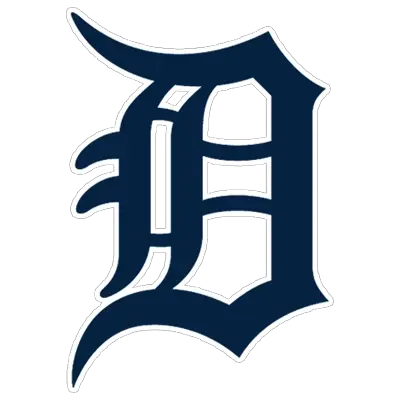
- Recent Form: Won 6 of their last 10 games.
- Offense: Averaging 5.1 runs per game, ranking 4th in MLB.
Key Players
- Gleyber Torres: .274 AVG
- Spencer Torkelson: 14 HR, 42 RBI
- Riley Greene: .267 AVG, 13 HR
Chicago White Sox (18-40)
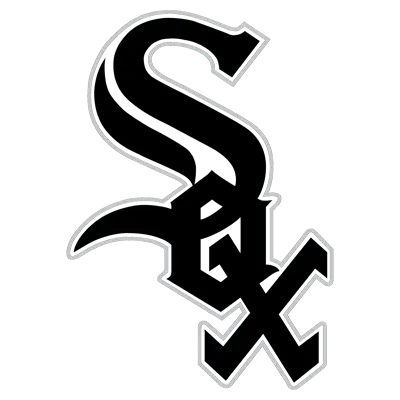
- Recent Form: Lost 6 of their last 10 games.
- Offense: Averaging 4.1 runs per game.
Key Players
- Luis Robert Jr.: .182 AVG, 5 HR
- Miguel Vargas: 8 HR, 26 RBI
- Andrew Benintendi: .237 AVG, 6 HR
Betting Odds & Insights
As of now, here are the odds and lines posted on BetMGM Sportsbook:
- Moneyline: Tigers -203 | White Sox +169
- Run Line: Tigers -1.5 (-122) | White Sox +1.5 (+102)
- Total Runs (O/U): 8.5
Best Bets
Here are the two best bets that we think are worth a look:
- Tigers -1.5 Run Line (-122): Flaherty’s coming off a scoreless start, and the bullpen behind him has been the best in baseball. With Detroit averaging over five runs per game, there’s an unobstructed path to covering the number.
- Under 8.5 Total Runs: The White Sox haven’t been generating much offense, and Detroit’s pitching has kept all of its opponents in check. Five of the Tigers’ last seven games have finished with eight runs or less. It feels like another low-scoring outcome unless Chicago finally strings together some hits, so it should stay under again.
Player Prop Highlight
Want to add a prop to your bet slip? The one below looks like a decent angle from the middle of Detroit’s order!
Kerry Carpenter Over 1.5 Total Bases (+105)
Carpenter has 12 hits in his last 9 games, with five going for extra bases. He’s hitting over .500 against right-handed pitching the past week, and Cannon’s given up 18 hits in his last 14 innings. If Carpenter keeps seeing the ball like he has, two bases feel well within reach.
Tigers vs. White Sox – What We’re Betting On
Detroit has the upper hand in this game. Flaherty is coming off six shutout innings, the bullpen leads MLB in ERA, and they’ve taken 11 of their last 14 against teams with losing records. The lineup has done enough to keep pressure on opponents and turn good starts into wins.
Chicago continues to be erratic at home; they’ve dropped six of their last eight, the offense has stalled for long stretches, and late-inning relief hasn’t held up.
And with the way these two teams have been trending? The under on 8.5 also makes sense.
You can check out our top online sportsbook recommendations before you bet to make sure that you’re getting the best price on either side!
Final Score Prediction: Tigers 5, White Sox 2
Flaherty gives them six strong innings, the bullpen handles the rest, and Detroit puts up a few runs across the middle frames. Chicago’s offense will be shoddy, and the Tigers take another one on the road.
FYI: The betting odds and stats are the latest but can change closer to the first pitch, so check your sportsbook! And as always, please gamble responsibly.

